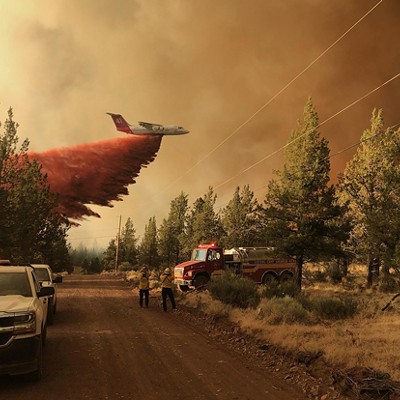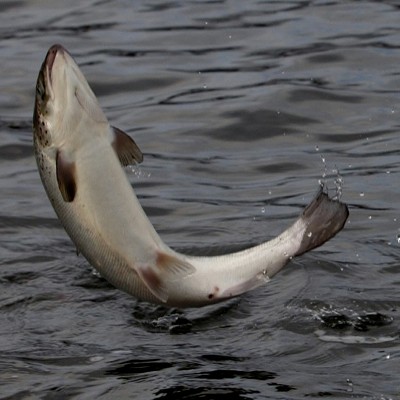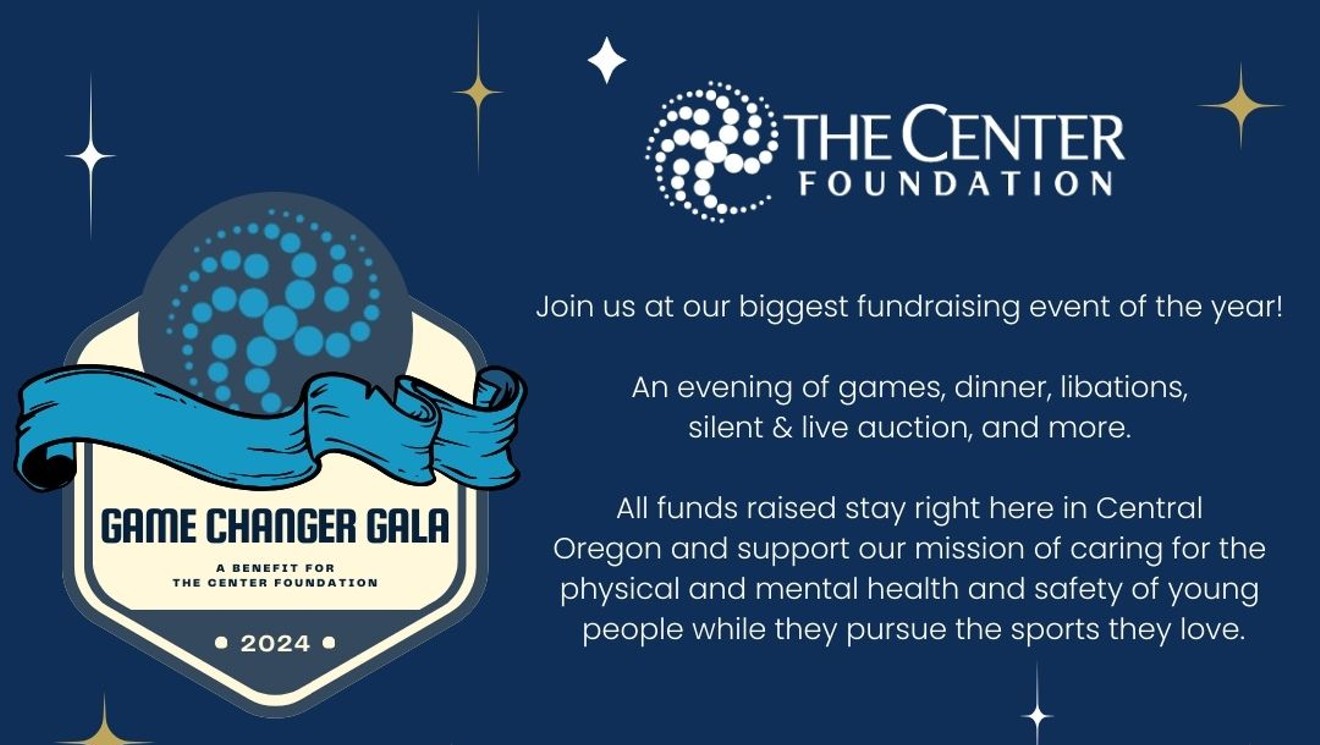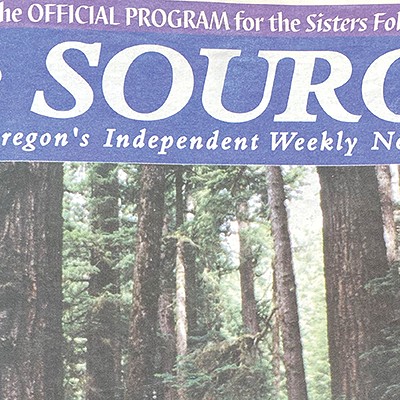Editor's note: The print version of this story listed the eclipse date as August 20. The date is August 21, 2017.
The Greatest Show on Earth is coming to Central Oregon this summer, and you don't need a ticket to see it. All you have to do is look up on Aug. 21 to watch the Great American Eclipse of 2017. The trick is to pick the right place to look up.
The last time America witnessed a total solar eclipse was in 1991, and it was only visible from the Big Island of Hawaii. The country's next chance to see one won't come until 2024. We can thank our lucky stars that we live so close to the path of this astonishing celestial performance.
Chasing the Disappearing Sun
When it comes to total solar eclipses, part-time Sunriver resident David Blackmore is something of an expert. The British expat and world traveler has been chasing eclipses around the planet for more than 15 years. Along with a loose-knit crew of dozens of fellow "Umbraphiles" from more than a dozen countries, he has watched the sun go dark in remote areas of Egypt and India, Scotland and South America, Africa, the Cook Islands, and the South China Sea.
In November of 2012, Blackmore and I drove several hours into the Australian outback and camped overnight to catch a two-minute, two-second total solar eclipse just after sunrise. Last March, we traveled five full days in airplanes, taxis, minivans, motorcycles, fishing boats, and homemade outriggers to reach an uncharted islet at the far edge of Indonesia's Togean Islands, where the total solar eclipse lasted two minutes and 30 seconds.
Why go to such great lengths to witness such a fleeting moment?
For some, it is a spiritual experience that reminds them of their tiny place in an awesome universe. For others, it is a scientific or photographic pursuit. Many eclipse chasers marvel at the reaction of nearby wildlife, as birds go silent and nocturnal animals come out of hiding. My first eclipse gave me an adrenaline rush, akin to a two-minute roller coaster plunge. The second one had a calming effect, as if my heart had melted.
Like many of his tribe, Blackmore has a long list of reasons for chasing the disappearing sun, including the 360 degree sunset and the opportunity to view the stars and planets during the daytime, when they are in a different position than at night. He admits, "I also like the fact that this hobby takes me to random, remote places I might never discover otherwise."
It should be noted here that, while the total solar eclipse lasts only a couple of minutes, the entire process lasts as long as an epic feature film. First contact—when the moon and sun first appear to "touch"—occurs more than an hour before totality begins, and starts as a tiny nibble from the sun's edge. As the eclipse progresses, the moon takes bigger and bigger "bites," until it swallows the sun entirely and repeats the process, in reverse, for an equal length of time. So while the main event is fleeting, the build-up and finale stretch out for nearly three hours.
For the eclipse this coming summer, Blackmore started conducting "rekkies" in June of 2015 to identify potential viewing spots nearby. While he won't reveal where he and his crew are planning to watch, he did share three top considerations for discovering your own perfect spot: "...visibility, flexibility, and duration (of totality)."
Central Oregon offers the trifecta: clear skies in summer, miles of open terrain for chasing openings in the clouds, and reasonably easy access to the "center line," where the eclipse lasts the longest.
What's the Big Deal?
A total solar eclipse is visible, on average, about every year and a half somewhere on the planet. The last one visible from Oregon happened in 1979 and was also seen by folks in Washington, Idaho, Montana and North Dakota. In 1970, a total solar eclipse graced the southeastern states of Florida, Georgia, North and South Carolina and Virginia.
This relatively rare astronomical phenomenon happens only when the earth, moon, and sun align in such a way that the moon blocks out the sun for those lucky people who happen to be in the right place at the right time.
Blackmore explains, "In order to see the heart of darkness during a total solar eclipse, you must be inside the path of totality. If you're outside the path, the best you can hope for is a partial eclipse."
The "path" is a 67-mile wide band of earth that swipes diagonally across the United States from Oregon to South Carolina. The closer you get to the "center line" of the path, the longer the total eclipse lasts. In Madras, considered one of the top 10 towns in the U.S. to view the "Great American Eclipse," (see GreatAmericanEclipse.com), totality begins at 10:19 am and lasts for just over two minutes. A bit farther east, outside Mitchell, you can extend the experience for a few more seconds, if you can find a suitable spot "on the line."
Where to Watch
Scout Out Your Own Spot
To identify a suitable spot on the line, Blackmore suggests consulting NASA's interactive map of the 2017 total solar eclipse to identify the center line and the path of totality, and then physically scouting out reachable locations as close as possible to the center line to find an unobstructed view that won't be blocked by trees, mountains, rock formations, or clouds. The ideal spot should offer plenty of "running" options, just in case changing weather forces you to chase holes in the clouds to see the sun. Fortunately, this is rarely an issue during summer in Central Oregon.
Watch from Madras
Eclipse fans will be converging on Central Oregon from all over the world. Hotels and public camping spots in and around Madras sold out long ago, but Jefferson County and the City of Madras are making space for an anticipated 20 to 40 thousand visitors at Oregon SolarFest, a four-day festival at the Jefferson County Fairgrounds that features food vendors, live music, shopping, educational activities, and experts from NASA who can answer burning questions about solar eclipses and other astronomical phenomena. "We've already taken reservations from nine different countries," says Sandy Forman of Oregon SolarFest and Jefferson County Tourism Group.
Camping accommodations range from DIY tent sites to turnkey "glamping" options. Families will appreciate the Kids' Dome, where parents can purchase a bracelet and "check in" their children for kid-centric fun, explore the festival with other grown-ups, and "check them out" a few hours later.
Forman says on-site camping and glamping reservations are filling up fast, but they are also offering another 150 acres of overflow, no-frills camping space at "SolarTown," located on private property that lies on the center line of the eclipse path. SolarTown residents will have access to porta-potties, a few food vendors, and free shuttles that run regularly between SolarFest, downtown Madras, the Madras Aquatic Center, and SolarTown.
Aug. 18-21
Times vary by day
$10 - $45
Watch from the Ochocos
For those seeking a Burning Man flavored experience, the Oregon Eclipse 2017 festival is slated for Aug. 17 through 23 at Big Summit Prairie, a 55,000-acre private ranch with a 52-acre lake, located northeast of Prineville. The total solar eclipse will last just over two minutes above this wide-open prairie surrounded by mountains. The week-long international art and music festival is organized by the producers of Symbiosis Festival in collaboration with eclipse festival organizers from 10 other countries. Oregon Eclipse 2017 features plug-and-play camping, art installations, live music and performances, fireworks and fire dancing, art boats and workshops, a family camp and more. "Experience Passes" will be available online starting Jan. 3, for an as-yet-undisclosed price. Organizer Ken KoChen says he is expecting upward of 20,000 attendees.
Aug. 17-23
Not yet published, but likely $300+
Watch from a Private Base Camp
If money is no object, Big Mountain Heli Tours is shuttling groups of six to remote base camps overlooking Lake Billy Chinook and the Cascades. For just under $6,000, you and your crew of up to six can be whisked away from the Madras airport or a local resort and deposited at your own private, prepositioned high desert hideaway with "...Dom Perignon Champagne, Oregon's own Harry & David gourmet basket, tables and chairs, eclipse-viewing eyewear, and a front-row seat to the greatest celestial event in Central Oregon in over four decades," according to the website. Afterward, they'll retrieve you, and return you to your previous destination.
9am to noon (approximately)
$6,000
541-668-7670
flycascades.com/activity/solarfest
Watch from the John Day Fossil Beds
John Day Fossil Beds National Monument boasts two locations directly on the center line (Painted Hills and Sheep Rock Units) and a third spot just north of center but still on the path of totality (Clarno Unit).
Aug. 21
9am to noon
No entry fee
nps.gov/joda/planyourvisit/eclipse.ht
Watch from the City of Culver
Culver has additional camping options within the path of totality. The City of Culver is arranging two separate dry camping areas for visitors. There will be 260 spaces that measure 20’ x 60’, most of which are back in. There is an RV dump station nearby and restrooms in the adjacent park but no other amenities. The Culver Crawdad Festival will be taking place on Saturday, Aug. 19 which includes vendors, entertainment, a bicycle poker ride, bingo and a dinner. This event is on Saturday only but the vendors will be given an opportunity to remain in the park through Monday. There are a few restaurants and convenience stores in Culver along with a gas station. Metolius, another small city also has a restaurant, convenience store and gas station. The other nearest cities that can provide all services are Madras (which is about 10 miles north) and Redmond, about 15 miles south of Culver.
Pro Tips from an Eclipse Chaser
Want to make the most of your eclipse experience? Follow these tips from those in the know.
1) Almost Doesn't Count
The difference between 2 minutes of totality and a split second of totality is nothing compared to the difference between a split second of totality and a partial eclipse. As one eclipse chaser from South Africa explained, "It's the difference between winning the lottery and winning a set of steak knives." If you can't get close to the center line, at least get inside the path of totality. You'll be glad you did.
2) Arrive Early
If you're planning to watch the eclipse from SolarFest (or anywhere else, for that matter), Forman suggests driving in a day or more in advance. Local roads are not designed to handle tens of thousands of visitors converging on Madras all at once, and a typical 90-minute drive from Bend could easily stretch to several hours. "We wouldn't want anyone to miss the eclipse because they're stuck in traffic," she said.
3) Procure Protective Eyewear
During the total solar eclipse, when the sun is completely hidden behind the moon, it is safe to stare at the sun with the naked eye. But before and after that limited window of time, there is a nearly [two hour] prelude and conclusion that can only be safely viewed through #14 welding glass, specially-designed solar eclipse glasses, or a DIY pinhole projector. You can purchase welding glass at local welding supply stores or online, and eclipse viewing glasses make their way to local stores as the date approaches.




























